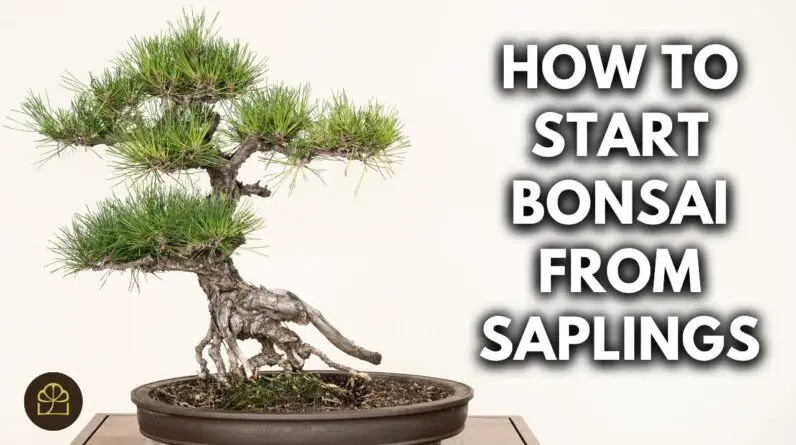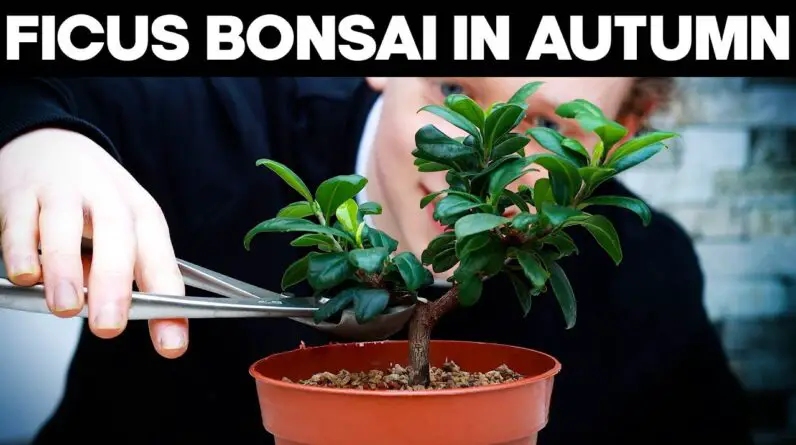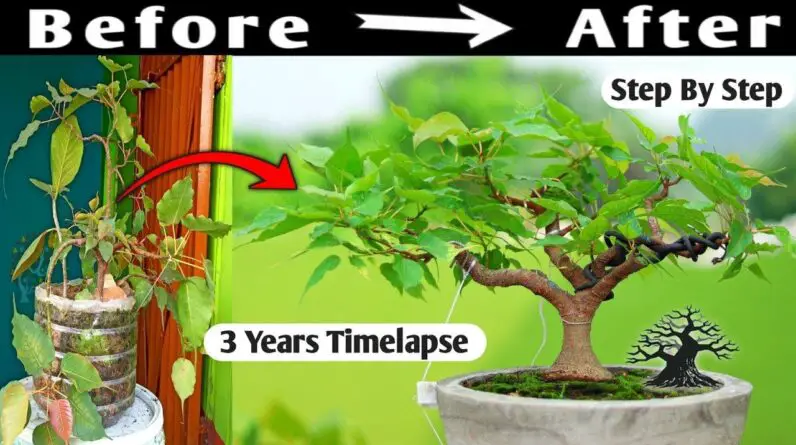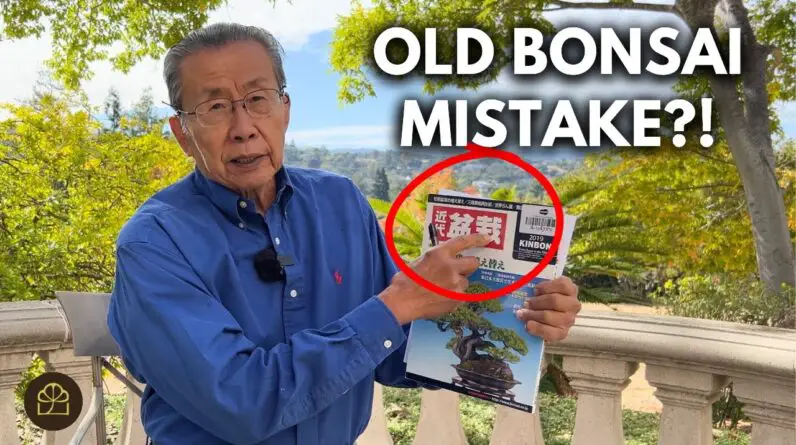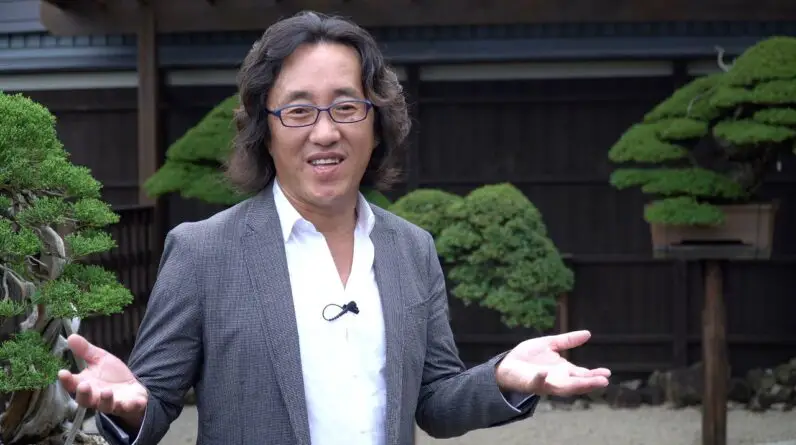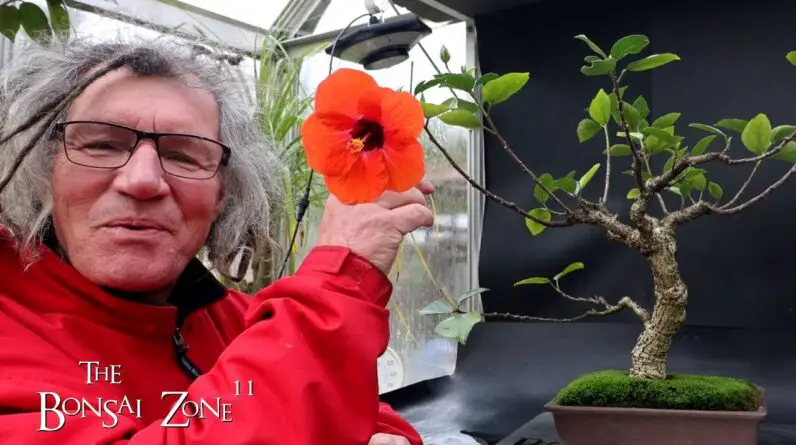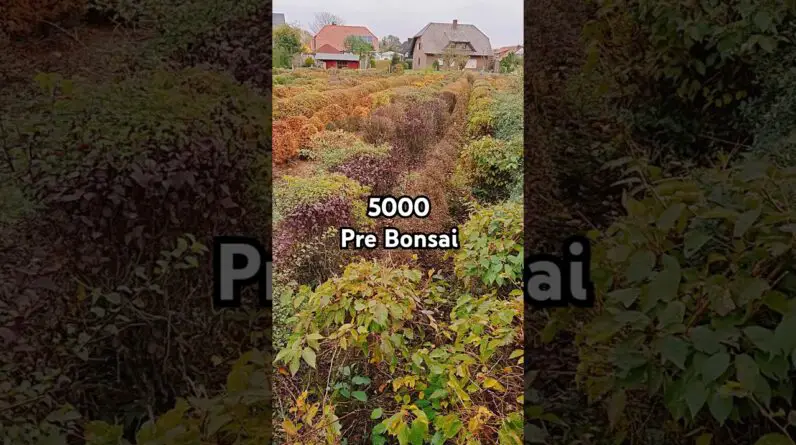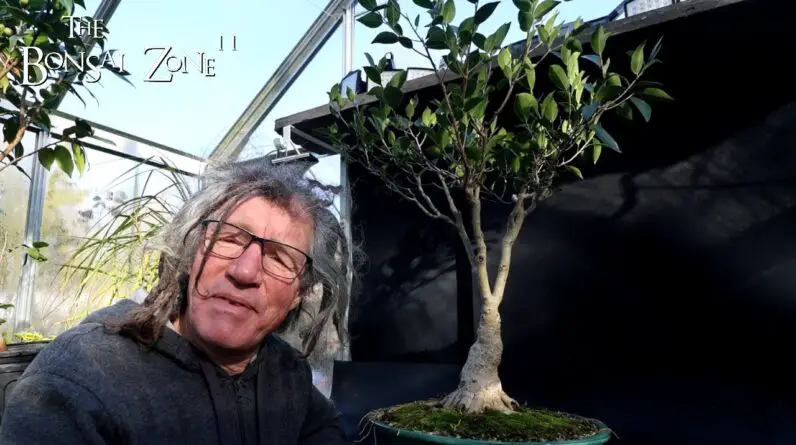Want to discover exactly how to make an Apple bonsai tree? In this video clip by Bonsai Realm, they show you just how to trim and wire an Apple tree that is around 15 years of ages. The video clip was shot during fall, when the tree was loaded with little apple trees.
Bonsai Empire is passionate regarding sharing the living art of Bonsai and produced this do it yourself tutorial to aid and motivate novices. This video becomes part of their on-line courses, yet they provide many various other complimentary video clips also.
So if you’re interested in finding out more regarding Bonsai techniques, head over to Bonsai Realm’s internet site!
In the video clip, they discuss the process of trimming and wiring this Apple bonsai tree. They use small pruning shears, pliers, and wire cutters. The top branch is the initial to be trimmed, and then they concentrate on two thicker branches to achieve the wanted shape.
They demonstrate the significance of a 360-degree method when cutting and electrical wiring to stay clear of any kind of dead angles. After the pruning and wiring, the tree looks more polished and balanced. With routine upkeep, this tree will remain to prosper and expand brand-new branches in the upcoming springtime. If you wish to learn more regarding trimming, electrical wiring, and repotting strategies, take into consideration joining Bonsai Empire’s on the internet training courses and gain access to professional guidance and the chance to ask the teachers concerns straight.
Apple Bonsai Tree: An Introduction
Welcome to the world of apple bonsai trees! Developing and growing a miniature apple tree can be a gratifying and fulfilling leisure activity. Not only do these bonsai trees give a stunning aesthetic, yet they additionally offer the chance to grow your own fruits in a small and workable room.
In this detailed article, we will assist you via the process of selecting the ideal apple tree range, collecting the essential materials, growing the tree from seeds, trimming and circuitry techniques, appropriate upkeep, potting considerations, and the distinctions between outside and indoor apple bonsai trees.
Take into consideration the Dimension of the Bonsai
When picking an apple tree selection for bonsai growing, it is very important to think about the best dimension of the tree. Since bonsai trees are suggested to be miniature versions of their bigger equivalents, choosing a selection that naturally stays little is important. Seek apple tree ranges that are understood for their small development and smaller stature, such as columnar apple trees or naturally dwarf varieties. This will make certain that your bonsai stays symmetrical and is simpler to manage.
Select a Crab Apple Tree Selection
Crab apple trees, with their small and vibrant fruits, are often the recommended choice for apple bonsai growing. These trees normally have much more fragile and proportional attributes, making them fit for bonsai aesthetic appeal. Additionally, crab apple trees are durable and versatile, making them simpler to look after and keep as bonsai samplings. Consider selections such as Malus sylvestris or Malus floribunda, which are frequently used in bonsai farming.
Consider the Environment and Location
Prior to choosing the apple tree range for your bonsai, it is essential to take into consideration the environment and location where you prepare to expand it. Various apple tree selections flourish in various climates, so pick a variety that is appropriate to your specific region. Additionally, remember the amount of sunshine and temperature needs of the selected variety. The majority of apple trees need complete sunlight to thrive, so ensure that your picked location supplies sufficient sunshine throughout the day.
Select an Ideal Bonsai Pot
Choosing the right bonsai pot is important for the health and wellness and aesthetic appeals of your apple bonsai tree. Look for a pot that is proportionate to the dimension of your tree and enhances its overall style. Bonsai pots are available in different materials such as ceramic, plastic, or clay. Each material has its very own advantages and considerations, so choose one that suits your personal preferences and the specific demands of your apple bonsai tree.
Acquire Quality Bonsai Dirt
Top quality bonsai dirt is necessary for the healthy growth of your apple bonsai tree. The dirt needs to offer ample water drainage while retaining adequate dampness for the tree’s origins. You can acquire pre-made bonsai soil blends that are particularly developed for bonsai cultivation, or you can produce your very own mix by incorporating components such as Akadama, pumice, and lava rock. Testing with different soil blends might be required to locate the suitable balance for your apple bonsai tree.
Get Pruning and Wiring Devices
Pruning and circuitry are vital methods for shaping and preserving the kind of your apple bonsai tree. To effectively trim and wire your bonsai, you will need a set of appropriate devices. Some crucial devices consist of a concave branch cutter for specific trimming, bonsai cord cutters for managing the cord, and pliers or tweezers for elaborate work. Invest in top notch tools to guarantee precision and minimize damages to your apple bonsai tree.
Gathering Apple Seeds
One of one of the most fulfilling methods to start an apple bonsai tree is by growing it from seeds. You can gather apple seeds from ripe fruits or buy them from respectable suppliers. Ensure that the seeds are fresh and viable for the very best chances of germination.
Prep work of Seeds for Planting
Before planting the apple seeds, it is very important to prepare them for ideal germination. Begin by saturating the seeds in water for 24-hour to soften the external seed coat. After soaking, get rid of the seeds from the water and permit them to dry for a few days. This process helps break the seed’s dormancy and increases the possibilities of successful germination.
Growing and Germination Refine
As soon as the seeds are prepared, plant them in small pots full of well-draining bonsai dirt. Location the pots in a warm and sunny area, and keep the dirt regularly damp. Germination usually takes around 2 to 4 weeks, depending on the range and ecological problems. When the plants have actually grown, choose the healthiest ones to proceed growing as your future apple bonsai trees.
Understanding Pruning Strategies
Pruning is a crucial element of bonsai cultivation that aids maintain the tree’s size, shape, and overall looks. By selectively getting rid of branches and foliage, you can achieve the preferred form and balance. Learn more about different pruning techniques such as maintenance pruning, branch pruning, and pinching to maintain the health and shape of your apple bonsai tree.
Recognizing the Right Branches to Trim
When trimming your apple bonsai tree, it’s important to identify the branches that require to be pruned. Seek branches that disrupt the desired type or impede the tree’s general equilibrium. Get rid of any type of dead, harmed, or undesirable branches to promote healthy and balanced growth and stop disease. Consult bonsai resources or seek guidance from skilled bonsai lovers if you’re uncertain which branches to trim.
Trimming to Achieve Desired Forming
Pruning is not only concerning upkeep however likewise regarding shaping your apple bonsai tree. Usage pruning methods to direct the tree’s growth and accomplish the preferred shape and design. Consider typical bonsai forms such as official upright, inclining, or waterfall, and adjust them to match the features of your apple bonsai tree.
Preparing the Tree for Circuitry
Wiring is one more important method in bonsai cultivation that helps produce and maintain the preferred form and framework of your apple bonsai tree. Prior to applying cords, ensure that the branches and trunk are flexible sufficient to be manipulated without causing damage. Younger branches are more flexible and easier to wire, while older branches might require gradual bending over time.
Selecting the Right Cord Dimension
Picking the suitable cord size is essential to prevent damaging the branches of your apple bonsai tree. The cable needs to be strong enough to hold the preferred shape without cutting into the bark. Choose a cable dimension that is roughly one-third of the thickness of the branch being wired. Copper or light weight aluminum cable is generally made use of, however make certain it is soft enough to be quickly shaped.
Using Electrical Wiring Techniques
To wire your apple bonsai tree, start by wrapping the cord at the base of the branch or trunk and then carefully spiral it upwards, seeing to it to keep a 45-degree angle in between the cable and the branch. Take care not to cover the cord too securely, as it can restrict the tree’s flow and create damage. Once the wanted shape is achieved, secure the cord by turning completions together or making use of wire clips. Eliminate the cable after a couple of months to avoid it from cutting into the bark.
Watering and Wetness Control
Appropriate watering is crucial for the wellness and vitality of your apple bonsai tree. The frequency and quantity of water required rely on different elements such as the climate, pot dimension, and tree’s development phase. Water your apple bonsai tree when the leading inch of dirt feels dry, ensuring that the water reaches the entire root system. Avoid overwatering, as it can cause root rot and other fungal conditions.
Fertilizing and Nutrient Needs
Maintaining soil fertility is important for the healthy growth of your apple bonsai tree. Apply a balanced plant food during the growing season to offer the necessary nutrients for optimal growth. Usage organic or slow-release fertilizers specifically developed for bonsai trees, complying with the recommended dose directions. Routinely monitor the tree’s reaction to fertilizing and change the feeding program as necessary.
Pest and Disease Administration
Like any other plant, apple bonsai trees can be at risk to different pests and diseases. Consistently evaluate your tree for indications of invasion, such as blemished leaves, pests, or abnormal development. If any kind of concerns are identified, promptly take proper steps to regulate and eliminate the problem. Take into consideration using natural parasite control techniques or consult with specialists if essential.
Repotting Regularity and Timing
Repotting is an important task in bonsai growing that enables origin system health and wellness and total growth control. The regularity and timing of repotting depend on numerous variables such as the age and development price of the apple bonsai tree. As a basic standard, repotting is commonly done every a couple of years, ideally during the very early spring before the tree begins actively growing.
Choosing an Appropriate Bonsai Pot
When repotting your apple bonsai tree, pick a brand-new pot that is slightly larger than the existing one. Think about the looks and overall balance of the tree when selecting the pot’s form and design. Guarantee that the pot gives appropriate drain openings and is made from a material that appropriates for bonsai farming.
Transplanting and Origin Pruning
Throughout repotting, very carefully eliminate the tree from its existing pot and delicately loosen up the origin sphere. Examine the roots and trim any kind of damaged or excessively lengthy roots. This process, known as root trimming, helps stimulate new origin development and keeps the tree’s origin system small. After root trimming, place the tree in the brand-new pot, guaranteeing that the roots are uniformly distributed and covered with fresh bonsai soil.
Correct Potting Techniques
When potting your apple bonsai tree, usage appropriate methods to guarantee its security and healthy development. Position the tree somewhat off-center in the pot to produce a sense of activity and balance. Secure the tree in place making use of bonsai cables or rocks, and load the remaining room in the pot with bonsai dirt, guaranteeing that no air pockets are left. Water the newly potted tree completely and monitor its recovery throughout the following weeks.
Advantages and Considerations for Outdoor Bonsai
Growing an exterior apple bonsai tree enables it to experience the natural altering seasons, which can enhance its overall beauty. Outdoor bonsai trees generally have more space to grow and develop a stronger root system. However, outdoor bonsai trees require careful consideration of climate and weather conditions, protection from extreme temperature fluctuations, and regular exposure to sunlight.
Benefits and Challenges of Indoor Bonsai
Growing an apple bonsai tree indoors provides more controlled conditions and allows enthusiasts in colder climates to enjoy bonsai cultivation year-round. Indoor bonsai trees require careful attention to temperature, humidity, and lighting conditions. Supplemental lighting may be necessary, especially during the winter months when sunlight exposure is limited. Additionally, indoor bonsai trees may require more vigilant pest and disease management due to the controlled environment.
Creating and caring for an apple bonsai tree is a rewarding and fulfilling endeavor. With proper knowledge and techniques, you can enjoy the beauty of nature in a miniature form and even grow your own miniature apples.
By choosing the right variety, gathering the necessary materials, mastering pruning and wiring techniques, maintaining proper care, and selecting the right pot and location, you can cultivate a stunning apple bonsai tree that brings joy and tranquility to your surroundings.
Happy bonsai cultivation!
[sspostsincat category=”How To Make Bonsai Apple Tree”]


